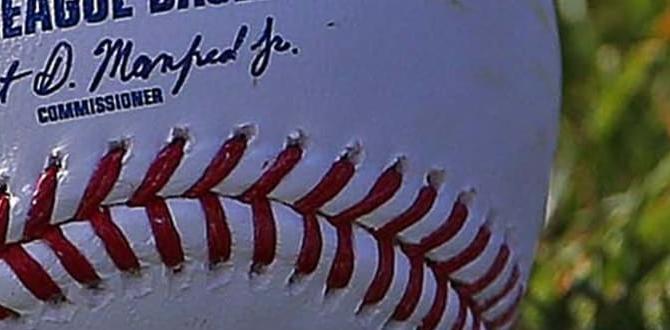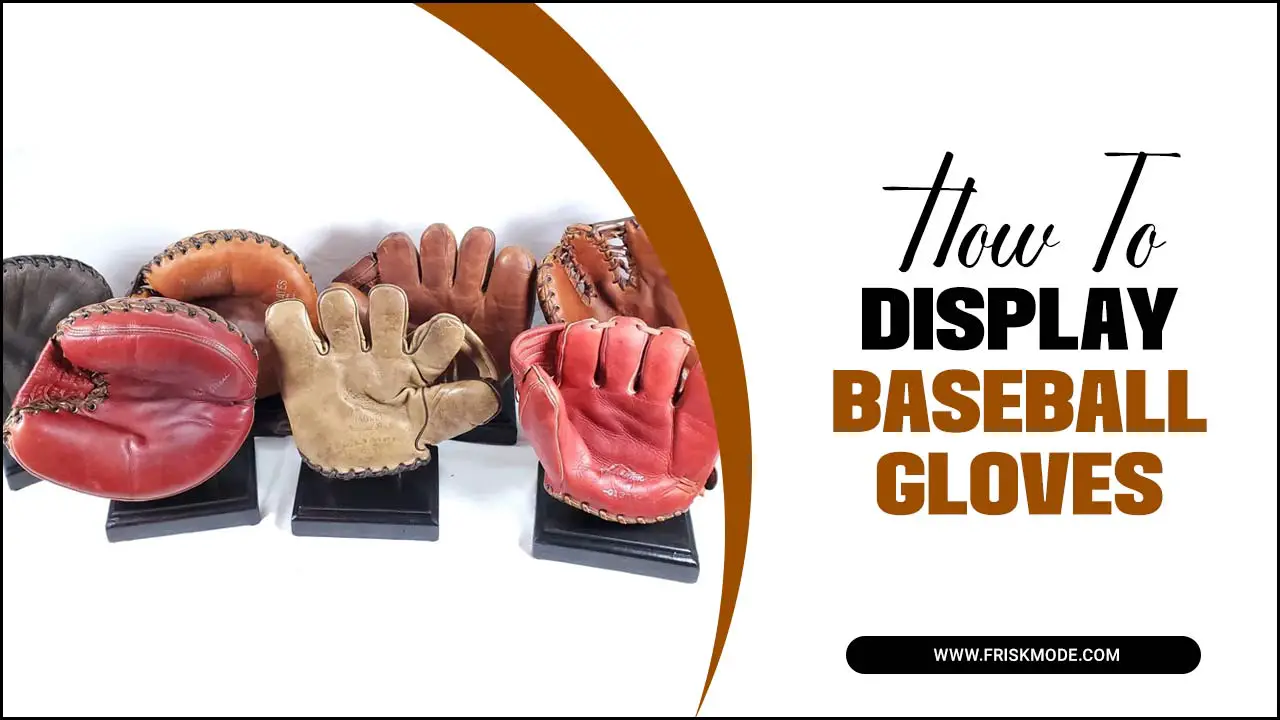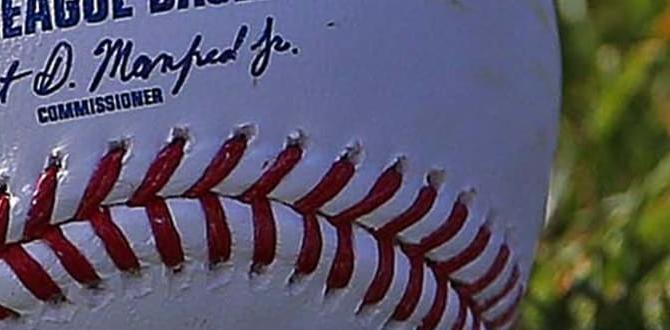Quick Summary: A youth catcher’s throat guard is a vital piece of safety equipment. It attaches to the catcher’s helmet, shielding the vulnerable throat area from foul balls or stray pitches, significantly reducing the risk of serious injury and ensuring young players can focus on the game with confidence.
Catchers Throat Guard For Youth: Essential Protection You Can’t Ignore
As a young catcher, you’re the leader on the field. You call the pitches, frame them perfectly, and block anything that comes your way. It’s an exciting and crucial role! But with that excitement comes some risk. The throat area is particularly vulnerable, and a fast-moving baseball can cause serious harm. That’s where a catcher’s throat guard comes in. It might seem like a small addition to your gear, but it makes a huge difference in keeping you safe. We’ll walk through everything you need to know about choosing and using the right throat guard, so you can play with peace of mind.
Why is a Throat Guard So Important for Young Catchers?
Baseball is a game of speed and precision, and catcher is arguably the position with the most immediate risk. Imagine a foul tip – a ball hit hard right back towards the plate. Or a wild pitch that skips unexpectedly. These scenarios mean a ball moving at high velocity is heading directly for the catcher. While adult catchers have a more developed neck and jaw structure, young players are still growing. Their throats are more susceptible to severe injury. A well-designed throat guard acts as a crucial barrier, absorbing and deflecting these impacts. It’s not just about comfort; it’s about preventing injuries that could sideline a player for a long time, or even worse.
Understanding the Risks of Playing Without a Throat Guard
Letting a young player squat behind the plate without a throat guard is a bit like driving a car without a seatbelt. It’s an unnecessary gamble. The consequences of a direct hit to the throat can range from painful bruising and swelling to more severe issues like damage to the larynx, difficulty breathing, or even fractures. These injuries are not only physically debilitating but can also be emotionally scarring for a young athlete. The psychological impact of a scare can make it difficult to return to the game with the same confidence and focus. Therefore, equipping young catchers with this simple yet effective piece of personal protective equipment (PPE) is a non-negotiable aspect of their gear.
Types of Catchers Throat Guards for Youth
When you look at catcher’s gear, you’ll notice that throat guards come in a few main styles. Most are designed to attach directly to the catcher’s helmet, offering a secure fit and maximum protection. It’s important to understand the differences so you can pick the best one for your needs.
Clip-On Throat Guards
These are the most common type for youth catchers. They typically feature a flexible design, often made of durable plastic or rubber. They usually have built-in clips or straps that securely attach to the screws or bars on the sides of a catcher’s helmet. Their primary advantage is ease of use; they can be quickly attached or removed without tools. They offer good coverage for the front of the throat.
- Pros: Easy to install and remove, widely available, generally more affordable, good basic protection.
- Cons: Can sometimes shift if not perfectly fitted, might not offer as much side protection as other styles.
Integrated Throat Guards
Some newer catcher’s helmets come with an integrated throat guard, meaning it’s part of the helmet’s design itself. This might be a piece of molded plastic or a sturdy fabric extension that’s permanently attached or designed to work seamlessly with the helmet. These offer a robust and secure fit, as they are engineered to work with the specific helmet model.
- Pros: Very secure fit, often provides excellent coverage, designed for optimal compatibility with the helmet, minimal risk of shifting.
- Cons: Less versatile if you change helmets, can be more expensive if buying as a package deal.
Full Face Protection Systems
While not strictly just a “throat guard,” some advanced youth catcher’s masks incorporate a full cage or a cage with an extended chin and throat flap. These offer comprehensive facial protection, including the throat. They are designed to keep the entire face, including the mouth, teeth, nose, and throat, safe from impact.
- Pros: Maximum protection for the entire face and throat, ideal for players at higher levels or those who want the utmost security.
- Cons: Can be bulkier, more expensive, and might slightly reduce visibility for some players.
What to Look for in a Youth Catcher’s Throat Guard
Choosing the right throat guard isn’t just about picking the one that looks coolest. Several factors will ensure it provides the best protection and comfort for a young player. Think of it like selecting the right tools for a job – you want the best fit for the task at hand.
Material and Durability
Throat guards are typically made from durable plastics, like ABS or polycarbonate, or high-density rubber. These materials are chosen for their ability to withstand impact and resist cracking. Look for a guard that feels sturdy and well-made. A flimsy throat guard won’t offer adequate protection. High-quality materials mean the guard will last longer, even with regular use and the inevitable bumps and scrapes of a baseball season.
Fit and Adjustability
This is paramount. A throat guard must fit snugly and securely to the helmet without being overly restrictive. It shouldn’t move around during play, twist, or obstruct the player’s vision or breathing. Many clip-on guards offer some degree of adjustability to accommodate different helmet designs. Check how the guard attaches – screws, clips, or elastic straps. Ensure the attachment mechanism is robust and won’t loosen easily.
Coverage Area
The primary function is to protect the throat. Ensure the guard extends far enough down to cover the vulnerable soft tissue of the neck. It should also have a reasonable width to protect against angled impacts. Some guards offer slightly more coverage than others. Consider how much of the face is also protected; some models extend slightly to shield the chin and lower jaw as well.
Comfort and Weight
While protection is key, comfort shouldn’t be overlooked. A heavy or poorly designed throat guard can be distracting. Most youth guards are lightweight, but it’s worth considering if it adds significant bulk to the helmet. It should feel like a natural extension of the helmet, not an encumbrance. Ensure there are no sharp edges or points that could cause discomfort.
Compatibility with Catcher’s Helmet
Not all throat guards are universally compatible with all catcher’s helmets. It’s essential to ensure the guard you choose is designed to fit the specific brand and model of helmet your youth player is using. Manufacturers often specify which throat guards are compatible with their helmets. Many guards are designed with universal mounting systems, but it’s always best to check.
How to Properly Attach and Adjust a Throat Guard
Getting the throat guard on correctly is just as important as choosing the right one. A loose or improperly fitted guard might not provide the protection you need and could even be a distraction. Here’s a simple step-by-step guide:
- Identify Attachment Points: Look at your catcher’s helmet. Most helmets designed for youth players have two screws or metal posts on the sides, usually just below the ear area. These are the common attachment points for clip-on throat guards.
- Prepare the Guard: If your throat guard has separate clips or screws, make sure they are ready to be attached. Some guards have clips that slide onto the helmet bars, while others require you to use the provided screws to secure them to the helmet’s frame.
- Position the Guard: Hold the throat guard up to the helmet. The main protective piece should hang down in front of the chin and cover the throat area. The attachment arms should align with the screw holes or mounting points on the helmet.
- Secure the Guard:
- For clip-on guards: Gently but firmly press the clips onto the helmet’s cage bars until they snap into place. Ensure they are securely seated and won’t easily pop off.
- For screw-on guards: Align the guard’s attachment points with the helmet’s screw holes. Insert the provided screws through the guard and into the helmet. Tighten them with a screwdriver until the guard is snug and doesn’t wiggle, but be careful not to overtighten and strip the screws or damage the helmet.
- Check Fit and Coverage: Once attached, have the player put the helmet on. The throat guard should hang in a comfortable position, covering the throat adequately. It shouldn’t poke the player, rub against their chin, or impede their breathing or vision.
- Test for Movement: Ask the player to move their head up, down, and side to side. The throat guard should stay in place and not shift excessively. If it moves too much, gently adjust the clips or screws for a tighter fit.
- Final Inspection: Do a quick visual check to ensure all parts are secured and there are no loose components.
For a visual guide, consider consulting the manufacturer’s instructions that typically come with the throat guard. Many reputable gear brands, like Rawlings, offer detailed product pages and sometimes even instructional videos for their specific gear.
Maintaining and Cleaning Your Youth Catcher’s Throat Guard
Like any piece of sports equipment, a catcher’s throat guard needs a little care to ensure it stays effective and hygienic. Proper maintenance will extend its lifespan and keep it performing at its best.
Cleaning Procedures
After each use, or at least regularly, it’s a good idea to clean your throat guard. Baseball is a dirty game, and sweat, dirt, and grime can build up.
- Mild Soap and Water: The simplest and most effective method is to use a mild soap (like dish soap) mixed with lukewarm water.
- Soft Cloth or Sponge: Dampen a soft cloth or sponge with the soapy water and gently wipe down the entire throat guard. Pay attention to any crevices where dirt might accumulate.
- Rinse Thoroughly: Rinse the guard with clean water to remove any soap residue.
- Air Dry: Allow the throat guard to air dry completely before reattaching it to the helmet or storing it. Avoid direct sunlight or intense heat, as this can degrade the plastic or rubber over time.
Important Note: Never use harsh chemicals, abrasive cleaners, or solvents, as these can damage the material and compromise its protective qualities. Always refer to the manufacturer’s specific cleaning instructions if available.
Storage
Proper storage helps maintain the shape and integrity of the throat guard. Store it in a cool, dry place, ideally with your other catcher’s gear. Avoid leaving it in a hot car or exposed to the elements for extended periods. If possible, store it in a gear bag that allows for some ventilation.
Inspecting for Damage
Before and after each game or practice, give your throat guard a quick inspection. Look for:
- Cracks or Fractures: Any visible cracks, especially in critical areas, mean the guard is compromised and should be replaced.
- Loose Attachment Points: Ensure clips are secure and screws are tight. If attachment points are damaged, the guard might not stay in place.
- Deformation: If the guard looks warped or misshapen, it may have been exposed to extreme heat or excessive force, potentially affecting its protective capabilities.
If you notice any significant damage, it’s time for a replacement to ensure your young catcher remains protected.
Comparison: Different Throat Guard Features
To help visualize the choices, here’s a quick comparison of common features you might find in youth catcher’s throat guards.
| Feature | Clip-On Basic | Clip-On Extended Coverage | Integrated Helmet Guard | Full Face Cage Guard |
|---|---|---|---|---|
| Attachment Type | Clips or screws to helmet | Clips or screws to helmet | Part of helmet design | Integrated with helmet cage |
| Material | Durable plastic/rubber | Durable plastic/rubber with extended flap | Molded plastic/rubber | Steel cage with plastic/rubber coverage |
| Throat Coverage | Standard | Extended downwards and sometimes sideways | Varies by helmet model, often substantial | Excellent, covers face and throat extensively |
| Ease of Installation | Very Easy | Very Easy | N/A (Comes with helmet) | N/A (Comes with helmet) |
| Adjustability | Limited (reliant on helmet fit) | Limited (reliant on helmet fit) | N/A | N/A |
| Best For | Beginners, general protection | Players needing a bit more coverage | Integrated helmet users | Maximum safety, highest levels of play |
| Typical Cost | $10 – $25 | $15 – $30 | Included with helmet, or $20-$50 if sold separately | $80 – $200+ (part of helmet package) |
The Role of the Throat Guard in Injury Prevention
It’s easy to think of a throat guard as just another piece of plastic, but its impact on injury prevention is profound. The throat contains vital structures – the larynx (voice box), trachea (windpipe), carotid arteries, and jugular veins. A direct impact in this area can have immediate and severe consequences.
A well-designed throat guard works by several mechanisms:
- Impact Absorption: The semi-flexible materials used in most guards can absorb some of the impact energy, dissipating it over a larger area.
- Deflection: The shape and angle of the guard can help deflect a foul ball or bouncing pitch, redirecting it away from the vulnerable neck.
- Barrier Creation: Most importantly, it creates a physical barrier between the hard baseball and the soft tissues of the throat.
Organizations like the Little League Baseball emphasize the importance of safety equipment, including protective gear for catchers. While they may not mandate throat guards specifically in all divisions, the recommendation for comprehensive protection is clear. The National Operating Committee on Standards for Athletic Equipment (NOCSAE) sets standards for athletic equipment, and while throat guards aren’t always covered under specific NOCSAE standards for helmets, their presence significantly enhances the overall safety of catcher’s equipment.
Maximizing Performance and Confidence with a Throat Guard
Beyond just physical safety, a properly fitted throat guard can boost a young player’s confidence and allow them to focus more on their game. When a player isn’t worried about getting hurt by a stray pitch or foul ball, they can:
- Focus on the Pitch: They can concentrate on receiving the ball cleanly, not be distracted by the potential for pain.
- Block Aggressively: Knowing they have protection can give them the confidence to block balls more effectively, preventing runners from advancing.
- Communicate Clearly: Reduced anxiety about injuries means they can focus on calling the game and communicating with their pitcher and infielders.
- Enjoy the Game: Ultimately, playing without constant fear allows young athletes to truly enjoy the game and develop their skills.
Think of it this way: when you know your critical systems are protected, you can push your limits and perform at your best. That’s what a good throat guard offers.
Frequently Asked Questions About Youth Catcher’s Throat Guards
Q1: Do all youth catcher’s helmets require a throat guard?
While not always a strict rule for all youth leagues, it is highly recommended by coaches, parents, and safety experts. Many helmets are designed with the expectation that a throat guard will be attached. Always check your league’s specific rules, but err on the side of caution and use one.
Q2: How often should I replace a youth catcher’s throat guard?
A throat guard should be replaced if it develops any cracks, significant wear, or if the attachment mechanism is no longer secure. Even without visible damage, it’s wise to consider replacing it every few seasons, especially if the player is experiencing a lot of impacts or if the material shows signs of degradation.
Q3: Can a throat guard affect a player’s ability to breathe?
If the throat guard is properly fitted and attached, it should not impede breathing. If a player feels like they can’t breathe comfortably, it might indicate the guard is too low, too restrictive, or not compatible with their helmet. Adjustments or a different model may be needed.




